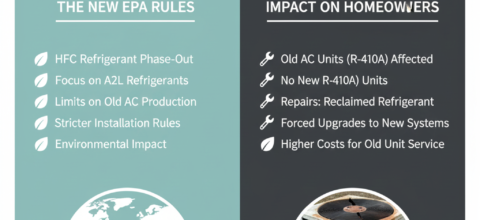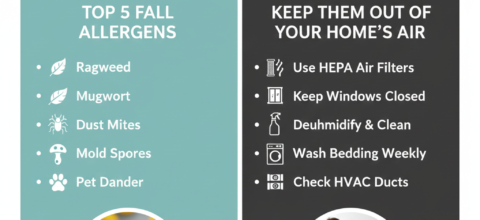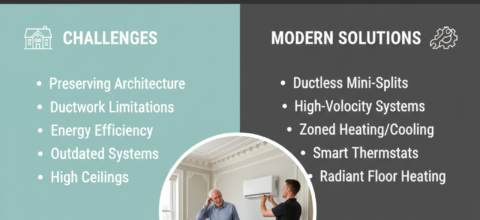Mold in Air Ducts: How to Detect It and What to Do
Mold in air ducts is a silent yet serious issue that many homeowners encounter without realizing it. This hidden threat can lead to health issues, unpleasant odors, and reduced air quality, affecting everyone at home. Learning why mold develops, how to spot it, and what actions to take are all essential in keeping your space healthy and mold-free. Read this guide to understanding what causes mold in air ducts, how to detect it, and effective ways to tackle and prevent it.
Why Mold Develops in Air Ducts
Mold spores are present in virtually all indoor and outdoor spaces. With the right conditions—specifically, moisture, warmth, and a food source—these spores can grow into colonies, turning clean areas into mold-prone spots. Air ducts are particularly vulnerable since they trap moisture from humid air, condensation, or HVAC leaks.
Common factors that contribute to mold growth in air ducts include:
- High Humidity: When indoor humidity levels exceed 60%, it creates an ideal environment for mold. Moisture in the air condenses in the ducts, giving mold a place to grow.
- Condensation: In colder months, warm air in the ducts meets cold duct walls, resulting in condensation. Poor insulation can exacerbate this, leading to damp surfaces where mold thrives.
- HVAC System Leaks: Leaks or blockages in the HVAC system can lead to moisture accumulation, fostering mold growth.
- Dust and Debris: Dust and organic particles in ducts provide a food source for mold. As these particles accumulate, they fuel mold growth and spread.
Potential Health Impacts of Mold in Air Ducts
Mold affects indoor air quality and can lead to health issues, especially for individuals with respiratory conditions, allergies, asthma, or weakened immune systems. Common health impacts of mold in air ducts include:
- Allergic Reactions: Mold spores can trigger sneezing, runny nose, itchy eyes, and skin irritation. Those with pre-existing allergies may see their symptoms worsen.
- Respiratory Issues: Mold spores irritate the respiratory system, leading to coughing, wheezing, and shortness of breath. Asthma sufferers may experience more severe symptoms.
- Eye, Nose, and Throat Irritation: Mold exposure can cause discomfort and exacerbate respiratory symptoms.
- Chronic Fatigue and Headaches: Long-term exposure can sometimes lead to non-specific symptoms like fatigue and headaches.
Mold in air ducts means spores continuously circulate through your home, affecting air quality and increasing the risk of health issues. Addressing mold early is key to minimizing these risks.
How to Detect Mold in Air Ducts
Spotting mold in air ducts can be challenging since much of the system is out of sight. However, several signs and techniques can help you determine whether mold is present:
- Musty or Moldy Odor: A persistent, musty smell, especially when the HVAC system runs, is a common sign of mold in ducts.
- Visible Mold Growth: Look for black, green, or white patches around air vents and ducts—these indicate active colonies.
- Increased Allergy Symptoms: If household members experience sneezing, coughing, or itchy eyes more often, mold spores might be circulating in the air.
- Discoloration Around Vents: Dark discoloration near vents or on walls may signal mold or mildew buildup.
- Professional Air Quality Testing: For a definitive assessment, consider air quality testing. Technicians use specialized equipment to detect mold spores and measure indoor air quality levels.
Steps to Address Mold in Air Ducts
If you suspect mold growth in your air ducts, addressing it quickly is essential. Here’s how:
- Turn Off the HVAC System: To limit spore spread, turn off the HVAC system until the issue is fixed.
- Inspect and Fix Moisture Sources: Since mold thrives in moisture, identifying and fixing any leaks, condensation, or humidity issues is essential.
- Hire a Professional Duct Cleaning Service: Professional mold removal in air ducts is best left to experts who have the right tools, protective gear, and cleaning agents. They’ll thoroughly clean the ducts and remove all mold spores.
- Use an Antimicrobial Treatment: After cleaning, professionals may apply antimicrobial agents to help prevent future mold growth.
- Replace Air Filters: Changing HVAC filters is crucial post-mold removal. HEPA filters can capture finer particles, including mold spores.
- Increase Ventilation: Boost airflow and ventilation at home to prevent mold from returning. This might include using dehumidifiers, running exhaust fans, and opening windows when possible.
Preventing Mold in Air Ducts
Preventive steps are vital for keeping air ducts mold-free. Here are some tips:
- Maintain Humidity Levels: Aim to keep indoor humidity between 30-50%. A dehumidifier can help keep moisture in check.
- Regular HVAC Maintenance: Routine HVAC checks can catch leaks, condensation, or blockages before they lead to moisture buildup.
- Clean or Replace Air Filters Frequently: Change air filters every 1-3 months, based on the type of filter and conditions.
- Insulate Ductwork: Proper insulation reduces the likelihood of condensation, lowering the chance of mold growth.
- Adequate Ventilation in High-Moisture Areas: Use exhaust fans or dehumidifiers in bathrooms, kitchens, and laundry rooms to keep moisture from reaching ducts.
- Use a UV Light in the HVAC System: UV lights within the HVAC system can neutralize mold spores and bacteria, keeping ducts cleaner.
When to Call a Professional
While tasks like changing filters are manageable, mold in air ducts often requires professional help. Mold removal specialists use advanced tools to safely inspect, clean, and treat air ducts. If you suspect mold in your ducts or notice warning signs, professional service can restore clean air circulation.
Mold-Free Living Made Simple
Amazon Air Duct Cleaning is dedicated to helping residents in White Plains, NY, Trenton, NJ, and Toms River, NJ maintain mold-free, healthy indoor environments. With over 10 years of experience, our skilled team specializes in professional air duct cleaning, dryer vent cleaning, and chimney cleaning for both commercial and residential clients. Whether it’s addressing mold concerns or improving overall air quality, we’re committed to providing a cleaner, safer space for your home or business.
Final Thoughts
Mold in air ducts can compromise air quality, health, and home comfort. By understanding how mold develops, spotting the signs, and taking timely action, you can protect your space and loved ones from potential health issues. Regular HVAC maintenance, moisture control, and preventive measures all play a role in keeping your home a safe, comfortable place for everyone.









